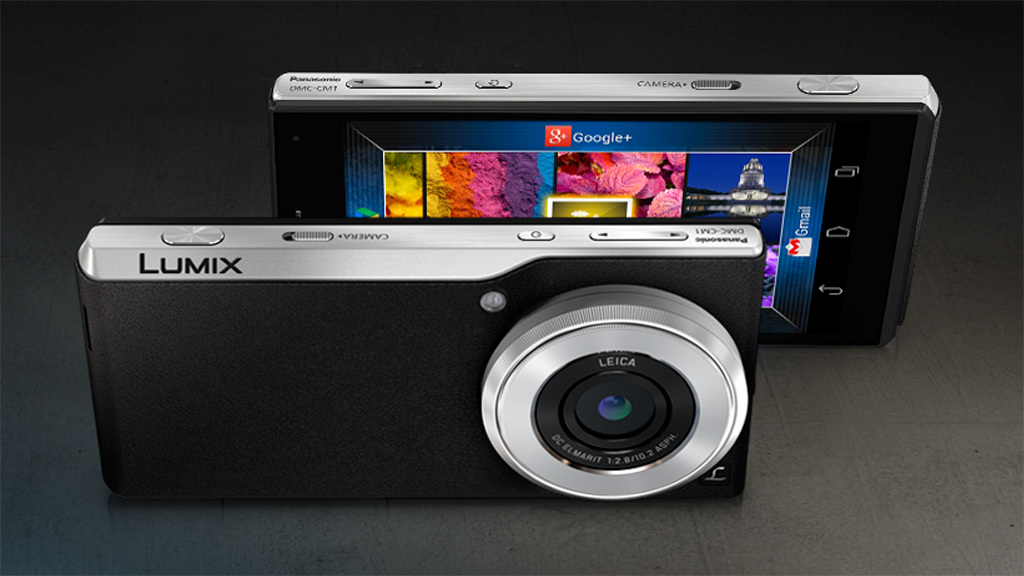Why the Panasonic Lumix DMC-CM1 is a bad idea
Stop shoving big cameras into smartphones

Panasonic announced a beast of a smartphone camera at Photokina 2014, and the little gadget has already garnered quite a bit of interest. For photo enthusiasts, having a 1-inch sensor with a Leica lens in a smartphone sounds like a dream.
It also helps that the Panasonic Lumix DMC-CM1 has a 4.7-inch 1080p display and all the GHz and RAM and mAh that a modern Android flagship has. So there's no question that, on paper, this is quite a good Android device.
But why do we need big, 20MP sensors on our smartphones?
First, this thing is going to cost more than a pretty penny. Trust me. Anything with the name Leica on it commands the big bucks. Just look at Panasonic compact and CSC cameras and compare them with the same cameras that happen to bear the Leica moniker. The Leicas are generally a few hundred dollars more.
Smartphones are my thing. I review them, test them, love them and hate them. But it's also no surprise that photography is a huge passion of mine, too. The natural assumption, then, is to think that I would fall in love with a good smartphone with an incredible camera, right?
We've tried this before, and it didn't work out so well. The Lumia 1020 was the first megapixel beast that we saw in a smartphone. The camera module itself was so big that it was quite a prominent feature in the phone's overall design.
However, we quickly learned that size didn't always matter. The 1020 was a dog, and regularly disappointed us in terms of performance. It was slow, image quality wasn't always that great and it was on a platform that, to this day, still desperately needs an overhauled ecosystem.
Get daily insight, inspiration and deals in your inbox
Sign up for breaking news, reviews, opinion, top tech deals, and more.
Buy a camera or a phone, not a cameraphone
When considering a new smartphone, I always tell people to consider battery life, or at least spare battery packs and cases. The weakest and slowest moving technology in any smartphone is battery life. We have processors fast as computers from a few years ago, displays so sharp that they'll cut your eyeballs, and yet we're still using the same lithium ion batteries that have been in smartphones for years.
If we consider the Lumix DMC-CM1 and its 2,600mAh battery, that's nothing. It's good enough to get an Android phone through the day, maybe, but coupled with the monster of a camera in it and you're done.
Buying this phone really means you're buying a camera that happens to be a phone, too. Otherwise, if you're really on the market for a solid Android device, you're better off with LG, HTC, Motorola or Samsung.
Then again, if you want to buy a good camera, buy a camera! There are so many good compact and CSC cameras out there now that I can't recommend something like the Lumix DMC-CM1 in good faith. Let history be a lesson: those Samsung Galaxy cameras that ran Android were hardly a runaway hit.
Quality hardly matters unless you're printing
The idea that you can take a photo with a proper camera with a nicely sized sensor behind some nice glass, then share it instantly with your Facebook or Instagram friends is great. Why shoot with the HTC One's 4MP UltraPixel camera for Instagram when you can have a 1-inch, 20MP sensor and Leica glass?
I'll tell you why: it doesn't matter. When you're looking at your Facebook or Instagram stream on your tiny little smartphone, you won't be able to appreciate the massive detail that these cameras can capture. How many megapixels do you need to produce a photo that's going to be viewed at 1.5 inches square?
Additionally, having the convenience of a nice camera running on Android doesn't really make sense anymore. More and more compact, CSC and DSLR cameras are coming equipped with Wi-Fi. That means you can control these cameras with your smartphone, and you can also edit and share your photos immediately through your iPhone or Android device.